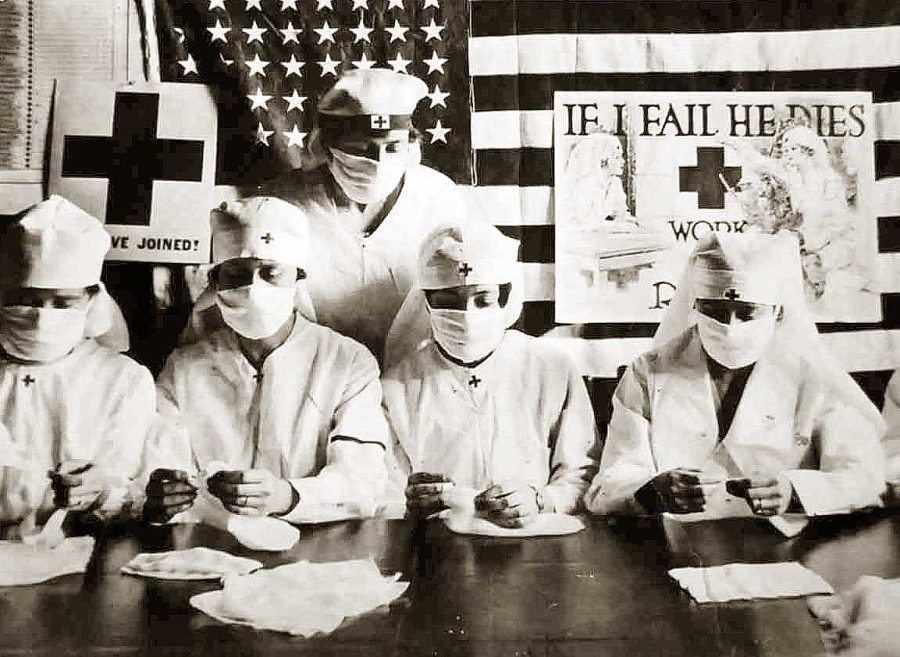The 1918 flu epidemic took the lives of fifty million people, about half of whom were in their twenties and thirties. A fifth of the world’s population was affected, with the US average life expectancy plummeting by twelve years in a single year. Fortunately, the deadly strain eventually morphed into something less destructive, and herd immunity was achieved. But what if the virus was never completely eradicated? What if the very strain that ravaged millions were to come back? It’s more conceivable than you might think.
In 1997, microbiologist Johan Hultin extracted the lungs of a 1918 flu victim from the Alaskan Brevig Mission gravesite. The sample tested positive for 1918 flu material, which led to the sequencing of part of the genome. This discovery was followed by a series of papers describing the sequencing of other parts of the genome, and when the final part was sequenced and published in Nature in 2005, the 1918 flu genome had been fully recovered. While this is already disconcerting, what makes it even more so is that the CDC has published this full genome online, making it available not just to scientists and researchers, but to you and me, state actors and, most frighteningly, terrorists.
It should be noted that the possibility of a second Spanish flu pandemic is unlikely. Widespread immunity to this type of virus already exists due to modern-day flu strains and numerous medical advances have been made in the last century. This unlikelihood doesn’t justify the making of this genome available online, however, especially considering the precedent it sends. Indeed, other viruses’ genomes, including smallpox and ebola, have also been posted online already.
This brings me to Deep VZN, a new program that is to be initiated by the United States Agency for International Development (USAID). Its stated goal, according to a statement released in October by USAID is “[working] with partner countries and the global community to build better preparedness for future global health threats [by] strengthen[ing] global capacity to detect and understand the risks of viral spillover from wildlife to humans that could cause another pandemic”–indisputably a worthwhile goal. However, the initiative has a majorly troubling aspect: their policy on data-sharing.
As with the 1918 influenza genome, Deep VZN plans to place their findings in the public sphere. Deep VZN’s NOFO (Notice of Funding Opportunity) outlines this data-sharing principle, proclaiming, “DEEP VZN is expected to generate actionable data on potential future threats, therefore it is critical that there be a robust data storage and sharing effort so that information on novel viruses will be actively shared with end-users, to include affected communities, policy makers, private sector, and research institutions.”
While some benefits could certainly accrue from a universal sharing practice, such a policy would be highly inadvisable from a security standpoint. To better understand the perils, look at history: the Japanese cult Aum Shinrikyo, responsible for a deadly 1995 subway gas attack, formed a bioweapon program led by Seichi Endo, a molecular biologist, and Hideo Murai, a physicist. Some of the cult members visited Africa, allegedly doing so as part of an “African Salvation Tour” but more likely to investigate the deadly ebola virus. The cult also tried to create an airborne version of anthrax, a bacterial ailment. While they did not complete either feat, these sketchy dealings with the ultimate goal of causing a pandemic should trouble us given that Deep VZN would make accomplishing such ambitions considerably easier. Another group that has already displayed an interest in bioweaponry would be Al-Qaeda. They already have biologists, whose jobs will become significantly easier after Deep VZN is implemented, working for them.
I do not doubt the noble intentions behind Deep VZN, but this data-sharing issue is a serious flaw that must be straightened out prior to the program’s launch. It may very well be what decides whether the next century constitutes a reign of terror or prosperity, a plague-stricken or a flourishing world.

